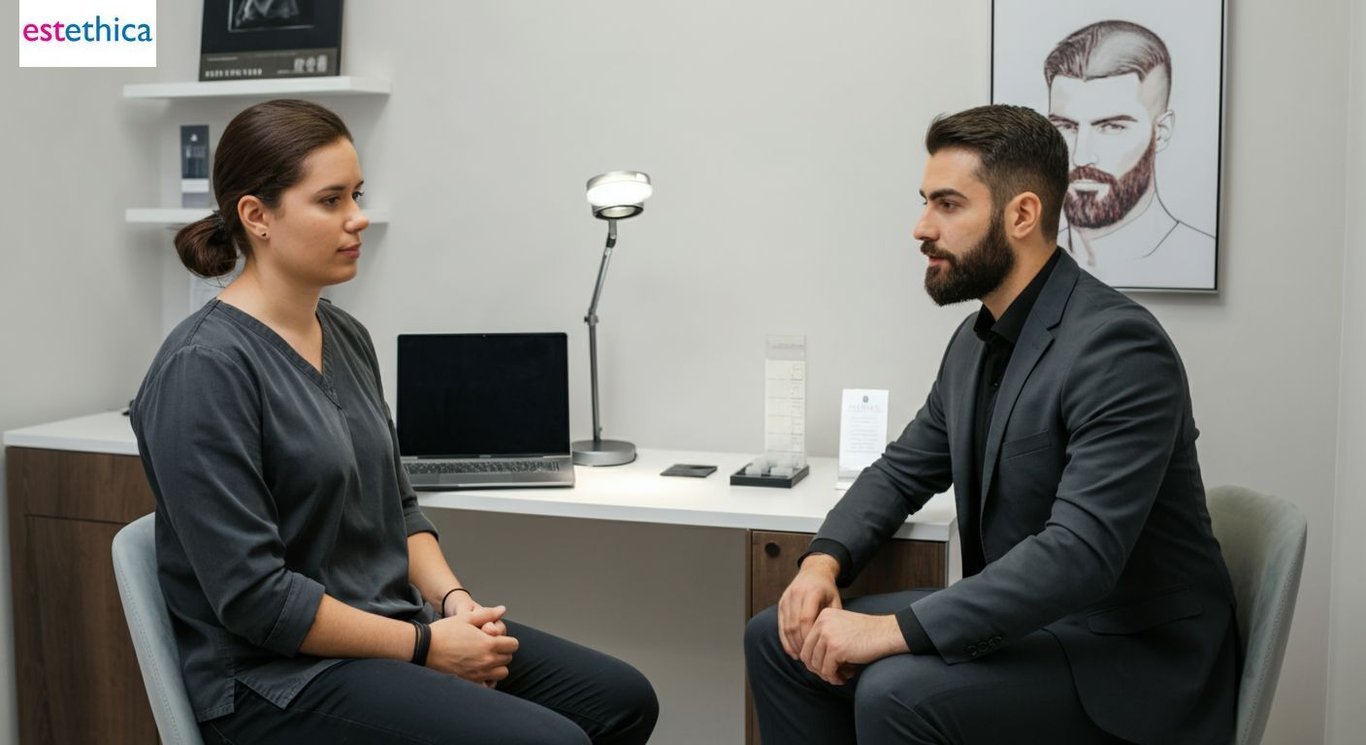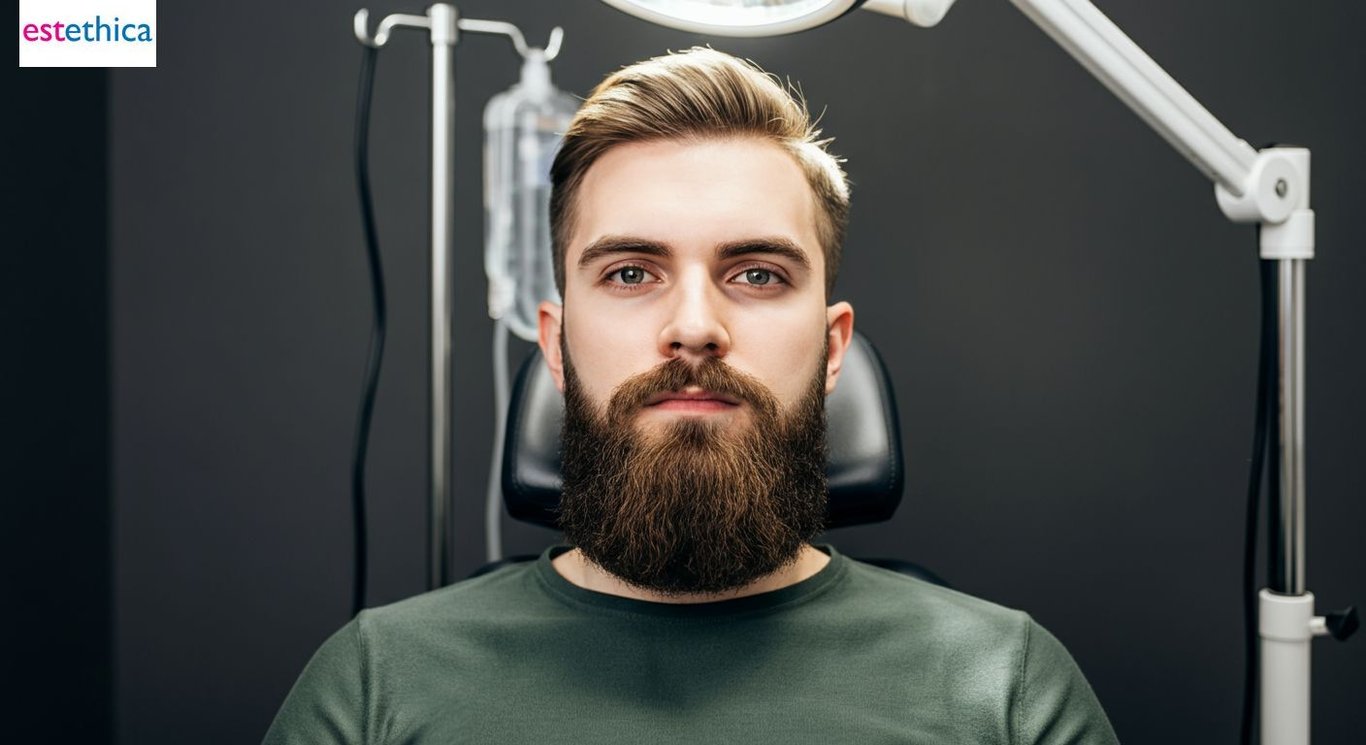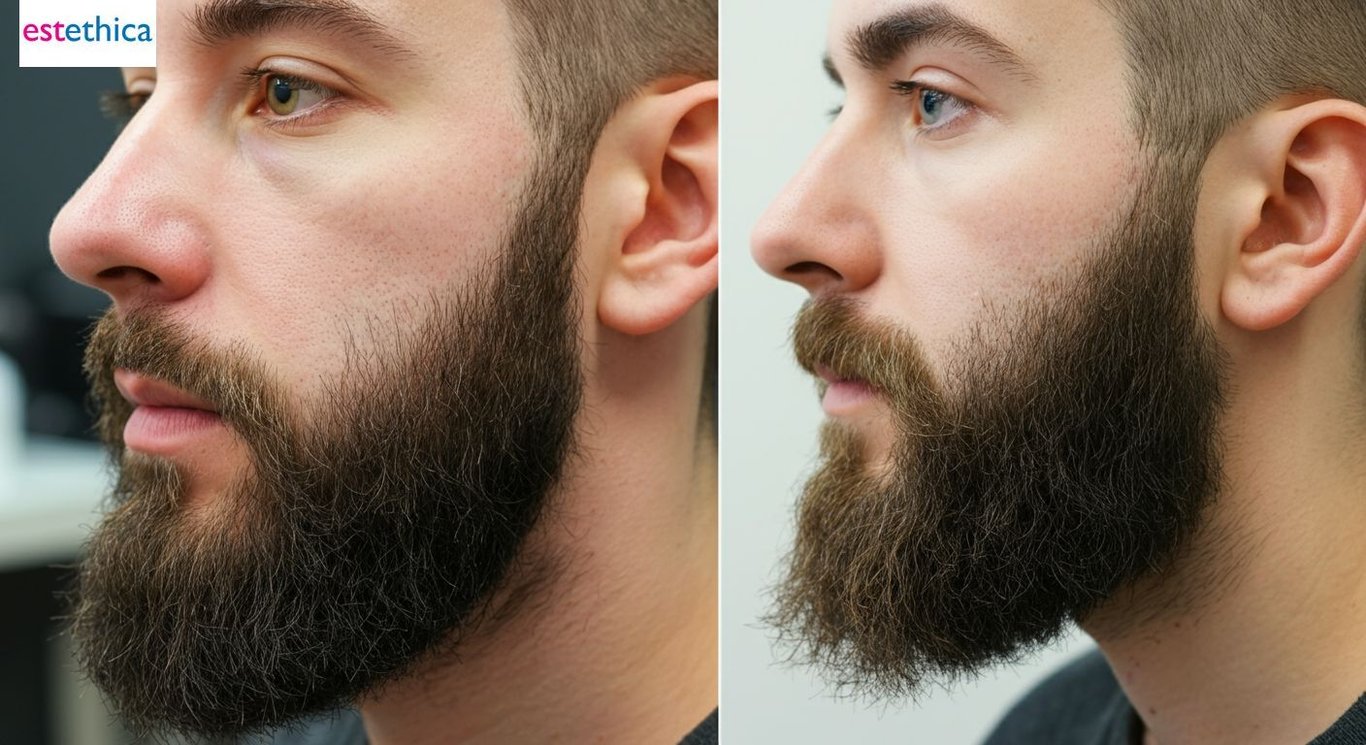Mastering Beard Transplant: A Complete Guide
Achieve the beard of your dreams. Learn about innovative transplantation techniques and see how others have transformed. Discover essential aftercare tips for all seasons.
Understanding Beard Transplantation: What You Need to Know
How Beard Transplants Work
Beard transplants have become a popular solution for those seeking fuller facial hair. The process involves transferring hair follicles from a donor site, usually the scalp, to the face. This meticulous procedure ensures a natural appearance by carefully spacing and angling the hair grafts. For instance, a man with patchy facial hair might opt for a beard transplant to achieve a more uniform look. Another example is someone who has lost facial hair due to scarring, finding restoration through this technique. Additionally, individuals with genetic predispositions to sparse facial hair can benefit from this transformative procedure.
Key Benefits of Beard Transplants
- Natural appearance through precise hair graft placement.
- Permanent solution for facial hair restoration.
- Boosts confidence and self-esteem with a fuller beard.
These benefits make beard transplants an attractive option for many. The procedure not only enhances one's appearance but also provides a lasting solution to facial hair concerns. For more insights into beard transplants, you can explore Mastering Beard Transplants: Essential Insights Revealed.
Steps in the Beard Transplant Process
- Consultation to assess facial hair needs and donor site suitability.
- Extraction of hair follicles from the donor area.
- Implantation of follicles into the beard area for a natural look.
Each step is crucial to ensure the success of the transplant. The consultation phase helps tailor the procedure to individual needs, while the extraction and implantation phases focus on achieving a seamless and natural result. This comprehensive approach underscores the effectiveness of beard transplants in facial hair restoration.

Exploring the Best Techniques for Beard Restoration
Understanding FUE and DHI Techniques
Follicular Unit Extraction (FUE) and Direct Hair Implantation (DHI) are two leading techniques in beard restoration. FUE involves extracting individual hair follicles from a donor area and implanting them into the beard region. This method is known for its precision and minimal scarring, making it a popular choice for those seeking natural-looking results. For example, a man with sparse facial hair might choose FUE to achieve a fuller beard without noticeable scars.
On the other hand, DHI uses a specialized tool to implant hair follicles directly into the skin without creating prior incisions. This technique allows for greater control over the angle and depth of each hair, resulting in a more natural appearance. An individual aiming for a specific beard style might opt for DHI due to its precision in hair placement.
Post-Operative Care for Optimal Results
- Avoid touching or scratching the transplanted area to prevent dislodging grafts.
- Follow a prescribed cleaning routine to maintain hygiene and promote healing.
- Limit sun exposure to protect sensitive skin and newly implanted follicles.
Proper post-operative care is crucial for the success of both FUE and DHI procedures. By adhering to these guidelines, patients can enhance the longevity and appearance of their beard transplants.
- Initial consultation to determine the best technique for individual needs.
- Selection of donor hair follicles based on texture and color match.
- Precise implantation to achieve desired beard density and style.
These steps ensure that the chosen technique aligns with the patient's goals, providing a tailored approach to beard restoration. By understanding the differences between FUE and DHI, individuals can make informed decisions about their facial hair restoration journey.

Beard Transplant Before and After: Real Transformations
Visual Impact of Beard Transplants
Beard transplants can dramatically alter one's appearance, providing a fuller, more defined facial hair look. For instance, consider a man with naturally sparse facial hair who undergoes a beard transplant. Post-procedure, his beard appears denser and more uniform, enhancing his overall facial symmetry. Another example is an individual with patchy beard growth due to alopecia; after a transplant, the even distribution of facial hair significantly boosts his confidence. Additionally, those with facial scars can benefit from beard implants, as the new hair growth effectively conceals imperfections, offering a renewed sense of self-assurance.
Factors Influencing Beard Transplant Success
- Quality of donor hair, which impacts the natural look of the transplant.
- Expertise of the surgeon in placing facial hair implants accurately.
- Patient's adherence to post-operative care instructions for optimal healing.
These factors are crucial in determining the success of a beard transplant. A skilled surgeon ensures that beard hair grafts are placed with precision, while high-quality donor hair contributes to a seamless appearance. Moreover, diligent post-operative care by the patient enhances the longevity and aesthetic of the beard hair replacement.
- Initial assessment to evaluate facial hair density and donor site quality.
- Strategic planning of hair graft placement for a natural-looking beard.
- Regular follow-ups to monitor progress and address any concerns.
These steps are integral to achieving successful beard transplant results. By focusing on each phase, from assessment to follow-up, individuals can ensure a transformative experience that meets their facial hair restoration goals.

Caring for Your New Beard: Seasonal Tips and Tricks
Grooming Products for Seasonal Beard Care
Maintaining a transplanted beard requires the right grooming products, especially during seasonal changes. In winter, opt for moisturizing beard oils to combat dryness and flakiness. For example, a jojoba oil-based product can help retain moisture and prevent beard dandruff. In summer, lighter, non-greasy balms are ideal to avoid excess oiliness. A balm with natural ingredients like shea butter can provide a protective layer without clogging pores. Additionally, using a gentle beard shampoo year-round ensures cleanliness without stripping natural oils, crucial for maintaining the health of facial hair implants.
Diet and Routine for Optimal Beard Health
- Incorporate protein-rich foods to support hair growth and strength.
- Stay hydrated to maintain skin and hair moisture levels.
- Establish a consistent grooming routine tailored to seasonal needs.
A balanced diet rich in proteins, such as lean meats and legumes, supports the growth of beard hair grafts. Hydration is equally important; drinking sufficient water helps maintain skin elasticity and hair health. Establishing a grooming routine that adapts to seasonal changes ensures your beard remains healthy and vibrant. For instance, increasing the frequency of moisturizing in winter and focusing on cleansing in summer can significantly enhance the longevity and appearance of your beard hair replacement.
Innovative Techniques in Beard Transplantation
Excellence in Beard Transplant Processes
Frequently Asked Questions
What are the best techniques for beard transplants?
What should I expect before and after a beard transplant?
How can I care for my beard transplant during winter?
What are the key benefits of undergoing a beard transplant?
What factors influence the success of a beard transplant?
Discover the path to 'Healthy Beauty' with estethica's expert care. Call now for your free consultation and experience the difference!
📞 Call Us Today for a Free Consultation!